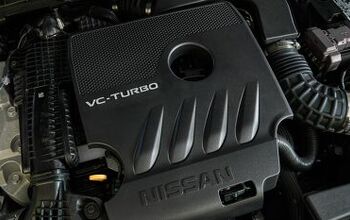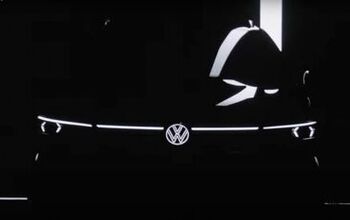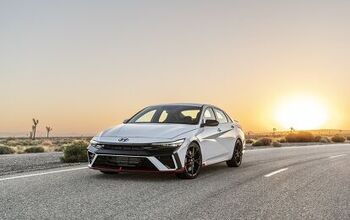Fitch, Moody's, Stand Alone As Subprime ABS Skeptics
Ratings agencies and other players in the finance world are beginning to sound the alarm on auto backed securities. Among the most troubling factors for some investors is the growth of smaller issuers who rely on pools of deep subprime loans. And ratings agencies who are being more conservative with their ratings are missing out on the action.
A report by Reuters highlights a recent ABS offering from Security National Automotive Acceptance Co (SNAAC), a smaller firm that focusing on loans to military personnel. This offering received a solid rating despite seemingly poor fundamentals.
According to the S&P, around 24% have ultra-low FICOs of between 500 and 550. And roughly 24% of the loans have loan-to-value ratios of 115% to 120% – meaning that the borrowers owe more than their vehicles are worth. Even so, S&P rated the deal AA, while rival DBRS gave it a full AAA rating.
Some players in the fixed income industry say that this kind of practice is far from an isolated incident. Ostensibly, a boom in subprime ABS has led to new players who are hungry for loans, regardless of quality
“The gap between the biggest players and the smaller issuers is just massive,” said John Kerschner, the head of securitized-product investing at Janus Capital Group. The smaller second-tier players go to deep, deep subprime – in the range of a 500 FICO score. That may not be the person you want to lend money to.”
Even more troubling is an assertion that ratings agencies Moody’s and Fitch, two well known companies in the bond ratings world have been deemed too cautious by a number of issuers, and thus have not been hired to rate their deals. Needless to say, this effectively stifles any outlooks that are less than rosy. John Bella, a top ABS official at Fitch, told Reuters
“We are generally more reluctant to reach AAA on subprime auto ABS for numerous reasons, among them the sector’s innately more volatile performance history, operational concerns and often heavy reliance on securitization as sole source of funding. Stiffer competition and deteriorating underwriting in recent months are amplifying our concerns.”
While the Reuters piece questions how investors may fare in the event of a burst ABS bubble, TTAC has long maintained that the real risk lies with new cars, the auto makers, and another possible systemic crisis. Auto manufacturers could interpret rising sales in an overly optimistic fashion, and start adding capacity as a result. But if the growth in sales is being driven by subprime lending, then it is inherently vulnerable to a slowing economy or an increase in unemployment. Either of those factors could be the trigger that causes subprime buyers to start defaulting. Used cars are less affected by this problem. They can simply be pumped through the system again and again, and the nature of subprime lending itself means that (if executed correctly) the high interest paid by everyone else can offset the losses brought on be delinquent debtors. If new car sales were to experience a significant contraction due to external forces like these, then auto makers could be left with a 2008-style scenario of idle plants, excess capacity and a glut of inventory, all of which are enormously costly to the OEMs.
More by Derek Kreindler
Latest Car Reviews
Read moreLatest Product Reviews
Read moreRecent Comments
- Lichtronamo Watch as the non-us based automakers shift more production to Mexico in the future.
- 28-Cars-Later " Electrek recently dug around in Tesla’s online parts catalog and found that the windshield costs a whopping $1,900 to replace.To be fair, that’s around what a Mercedes S-Class or Rivian windshield costs, but the Tesla’s glass is unique because of its shape. It’s also worth noting that most insurance plans have glass replacement options that can make the repair a low- or zero-cost issue. "Now I understand why my insurance is so high despite no claims for years and about 7,500 annual miles between three cars.
- AMcA My theory is that that when the Big 3 gave away the store to the UAW in the last contract, there was a side deal in which the UAW promised to go after the non-organized transplant plants. Even the UAW understands that if the wage differential gets too high it's gonna kill the golden goose.
- MKizzy Why else does range matter? Because in the EV advocate's dream scenario of a post-ICE future, the average multi-car household will find itself with more EVs in their garages and driveways than places to plug them in or the capacity to charge then all at once without significant electrical upgrades. Unless each vehicle has enough range to allow for multiple days without plugging in, fighting over charging access in multi-EV households will be right up there with finances for causes of domestic strife.
- 28-Cars-Later WSJ blurb in Think or Swim:Workers at Volkswagen's Tennessee factory voted to join the United Auto Workers, marking a historic win for the 89- year-old union that is seeking to expand where it has struggled before, with foreign-owned factories in the South.The vote is a breakthrough for the UAW, whose membership has shrunk by about three-quarters since the 1970s, to less than 400,000 workers last year.UAW leaders have hitched their growth ambitions to organizing nonunion auto factories, many of which are in southern states where the Detroit-based labor group has failed several times and antiunion sentiment abounds."People are ready for change," said Kelcey Smith, 48, who has worked in the VW plant's paint shop for about a year, after leaving his job at an Amazon.com warehouse in town. "We look forward to making history and bringing change throughout the entire South." ...Start the clock on a Chattanooga shutdown.


































Comments
Join the conversation
Going from AAA to AA isn't exactly going to be terrible. But you have to understand something. Auto subprime lending is only going to be dangerous if other parts of the economy falter and people can't pay for their cars. The latest crisis showed how people would let their houses go while making car payments. There was plenty of subprime lending for cars then too. IMHO, the only reason this matters is the economy tanks even further and people aren't able to afford cars. This would be a secondary effect and not a cause.
Sub Prime auto loans are completely different from Sub Prime housing loans. Why? It is a million times easier to repo a car than a house. Housing foreclosures take forever. Automotive recovery is a very quick process. The risk is simply not the same.